Amp On, Game On: VP5E at CQ WPX SSB 2025
W1DED goes for broke in the Single Operator High Power All Band category
It was quiet when I arrived at the house on Providenciales — the kind of stillness that invites reflection. Jim Jordan, K4QPL, wasn’t there to greet me, but his legacy was on full display. Eight plaques lined the walls, each one earned with the call sign VP5M: victories carved out in contests past, mostly low-power CW, both North American and World titles. It was humbling. Intimidating, even. I hadn’t come to run VP5M. I’d be operating as VP5E. But I knew full well what that station had accomplished. And for someone still relatively new to contesting at this level, stepping into that kind of history felt like walking onto hallowed ground.
I also didn’t go to Turks and Caicos aiming to win. But I did come ready to compete. A few weeks before the contest, I was hosting my usual pre-contest roundtable with the W1DED Worldwide Ham Radio Contest Crew and floated the question: “Low power or high power?” I admitted I certainly wasn’t expecting a win — but was aiming to post a respectable score. That’s when Chris, KL9A, chuckled and said, “Well, I guess you’re turning the amp on then.” That moment stuck. Enough people heard it — and brought it up to me afterward — that it became a bit of a theme heading into the weekend. I was in. Amp on. Time to go.
Prepping for the Big Event
I had arrived in Turks and Caicos three and a half weeks before the contest with a plan to work remotely, fit in some vacation time, and operate ham radio. That time turned out to be invaluable — not just for getting familiar with the station, but for logging over 6,000 QSOs as VP5/W1DED (I was saving the VP5E call for the contest). Every contact gave me more insight into the station’s personality and, more importantly, how propagation behaved from this part of the Caribbean. While I use an Elecraft K3 and KPA500 regularly, using them here, in a salt-air RF paradise, was different. Dan, N6MJ — another Contest Crew member — had always said there’s no better way to prep for a contest than by operating. That’s exactly what I did.
I also spent time checking out the azimuth map for VP5, building band-change spreadsheets based on past winners, and fine-tuning my N1MM setup. I fully intended to get the N1MM function keys working to give my voice a break — but I waited too long. As the contest start time loomed, I couldn’t quite get it sorted. Lesson learned: anything you don’t test ahead of time becomes your problem at go-time. Still, I made do.
The 80-meter antenna had worked well during my pre-contest ops, but something changed the night before WPX. Tuning suddenly became inconsistent. I suspect it was weather-related — heavy rain and wind had rolled through the island. I didn’t want to waste precious time troubleshooting just before the contest. At that point, I wasn’t expecting to post a big score anyway and figured 80 meters wouldn’t be worth the trouble. In hindsight, skipping it likely cost me multipliers — and multipliers ended up being one of my missed opportunities.
The SteppIR also came with a twist: instead of a rotor controller at the desk, the beam was rotated manually from the base of the mast. No climbing required — just a trip outside the shack and a few minutes of physical adjustment. Still, five minutes out of the chair in a contest can feel like an eternity. I started with the beam fixed at 360 degrees and made a few calculated shifts — from 330 to 40 degrees — during the event, always aware that stepping away could cost me.
Fast Start
The contest began — and something clicked.
I’ve never had a start like this. In nearly every other contest, the first few hours have been rough — finding a rhythm, getting past the jitters, managing pileups. But this time was different. The pileups came quickly and stayed steady. And for the first four hours, I was holding QSO rates that matched veteran contester Bud AA3B at V26K. I knew this because I was monitoring the Contest Online Scoreboard. Keeping up with Bud - who also happens to be the CQ WPX Contest Director - was an incredible confidence boost.
By 0500 UTC, I had 827 QSOs. At 0621 UTC, 956. Even with that strong rate, I was falling behind on multipliers. My QSO count held up, but I couldn’t secure enough 40-meter contacts to take advantage of their higher point value. I was pushing, trying to make something happen, but the results just weren’t matching the effort. Finding a frequency to run for any amount of time was nearly impossible. For the first time, I found myself wishing for the full 1500 watts allowed in the high-power category — I was running just 400 watts with Jim’s KPA500.
The magic I’d felt earlier on 10, 15, and 20 meters didn’t follow me to 40. It wasn’t that the band was dead — it was packed with activity, just not giving me what I needed to stay in the game. Still, I left the chair Friday night with more confidence than ever after a contest start. Something was clicking. I was in it.
Saturday is Run Day
Saturday was the sweet spot. I woke up early and refreshed. It was a day of mostly steady, manageable runs. I spent 6.5 hours running on 10 meters before moving to 15 for another six hours. By 0100, I needed to move to 40 meters — and hit the same wall again. Tough medicine. I ended up spending most of my time on 20 meters instead of chasing the high value 40 meter QSO’s
By early Sunday morning, fatigue and frustration were competing with determination. I’d logged over 3,000 contacts and decided to get some sleep around 0300 UTC, knowing FM5BH – who I had been chasing on the scoreboard - would likely widen his lead. I set an alarm to wake up an hour before sunrise so I’d be ready for the bands to open.
Final Push and Reflections
At 0900 UTC I was awake. My 36-hour plan had me starting at 1000 UTC, so I grabbed some coffee, checked the Scoreboard, and turned up the volume on the K3. Much to my chagrin, FM5BH was already knocking out Qs. I didn’t think I’d be able to catch him, but I knew from Saturday’s experience that I could find rate. After spending some time on 40 and then 20, I noted K3LR’s presence on 10 meters and jumped in. With the exception of 30 minutes on 20, I spent my day running on 10.
By Sunday afternoon, I was running on fumes. Then, while parked low on 10 meters with a solid, sustainable run that should have been very productive in the final hours, I got hit with intentional QRM. It was the second time that weekend. This one unraveled me. My copy suffered, and I started making mistakes. I could feel the wheels wobbling.
All weekend, encouragement came from unexpected places — not in the log, but through messages and support from the ham community. Viewers of my YouTube channel were cheering me on. Friends and past W1DED Worldwide Ham Radio guests worked me. I know we’re not supposed to break rhythm, but I said a quick hello to most. They were part of the experience. So was Les, KI5GTR, a POTA activator I met during the trip. He worked me from back in the States. And then Seth, NU1D, the 14 year old operator from Maine who I had just interviewed from Turks called in. That one meant a lot.
When I shut the rig off at 2315 UTC, I was exhausted — and yes, a little deflated. I didn’t finish as strong as I knew I could have. The QRM had rattled me, and I didn’t trust myself to keep copying cleanly. So I left a few QSOs — and a slightly higher score — on the table.
But then the raw scores came out.
I had placed #6 in North America in the Single Operator High Power All Band category — with just 400 watts, a SteppIR at 30 feet, no rotor, and no packet spotting. A true unassisted effort. I know log checking will knock my score down a bit, but this already felt like a win. A real one.
Band Totals:
10 meters: 2,191 QSOs
15 meters: 958
20 meters: 880
40 meters: 334
80/160 meters: 0
Total: 4,363 QSOs | 1,127 multipliers | ~12 million points
Would I do things differently next time? Absolutely. I know where the score slipped away — the missed mults, the underwhelming 40-meter effort, the untested F-keys, and the decisions that made sense in the moment but cost me in the end.
So, what’s the answer? Come back and do it again.
The following is the VP5E raw score and standing before log checking.






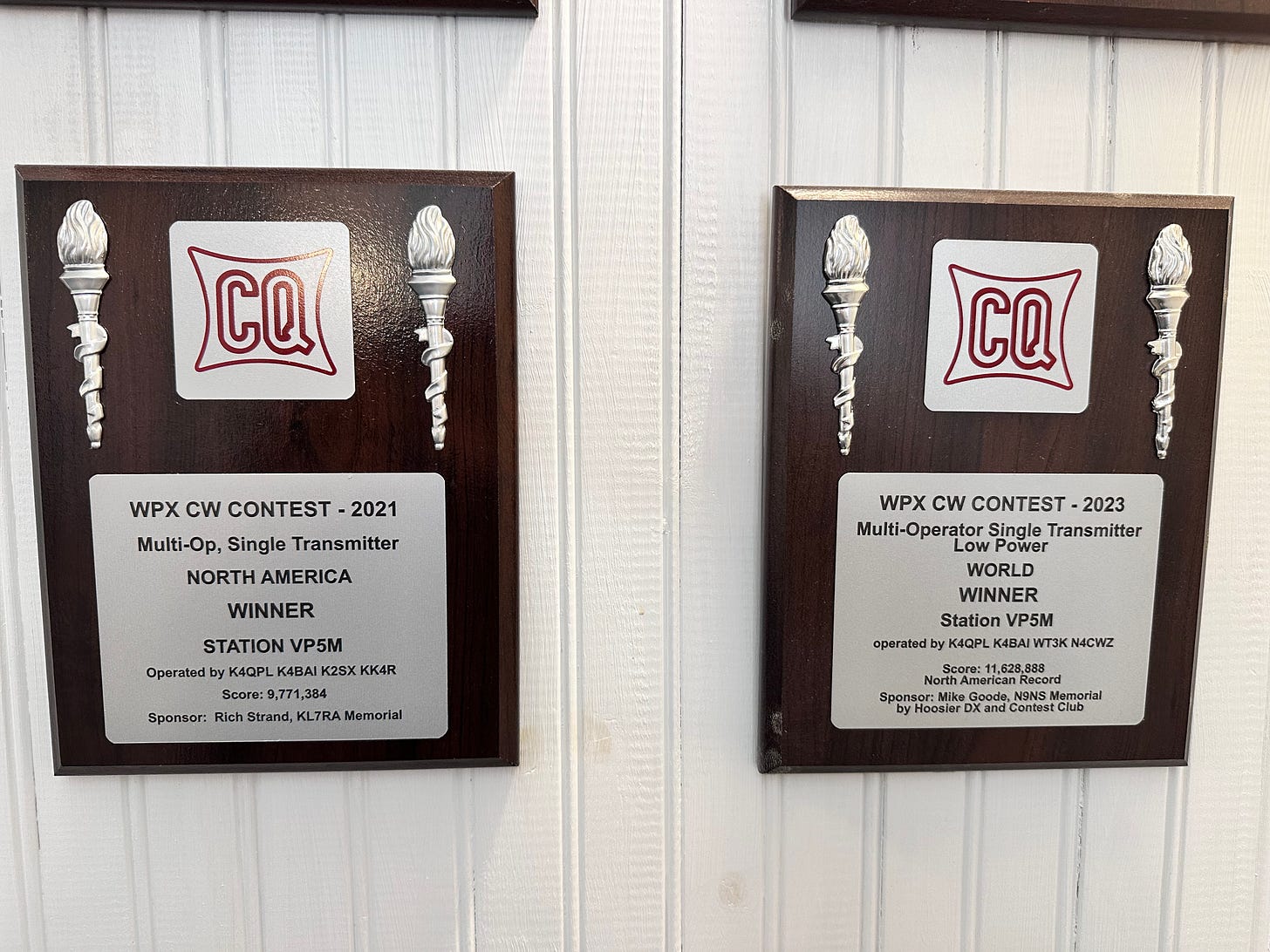
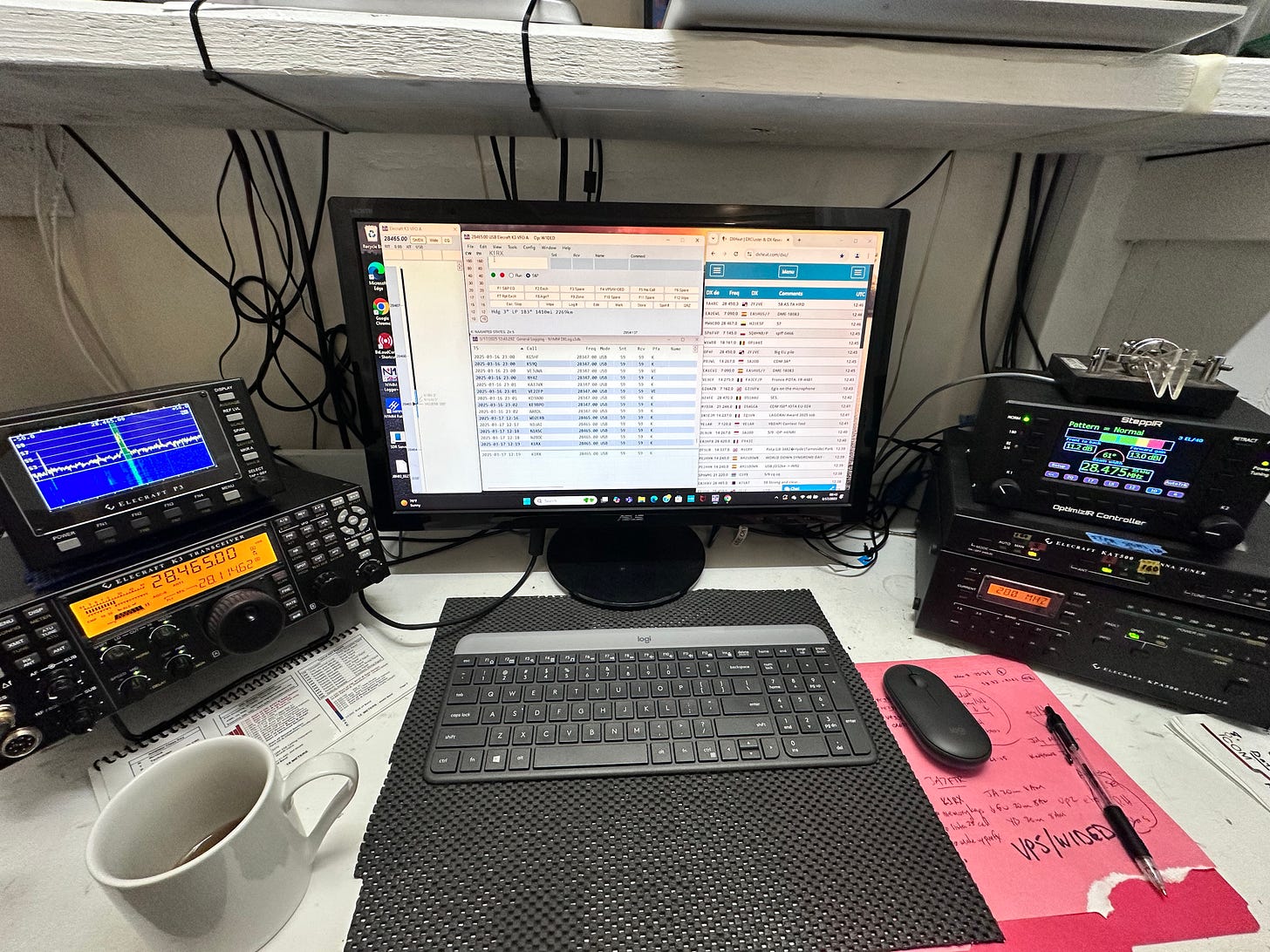
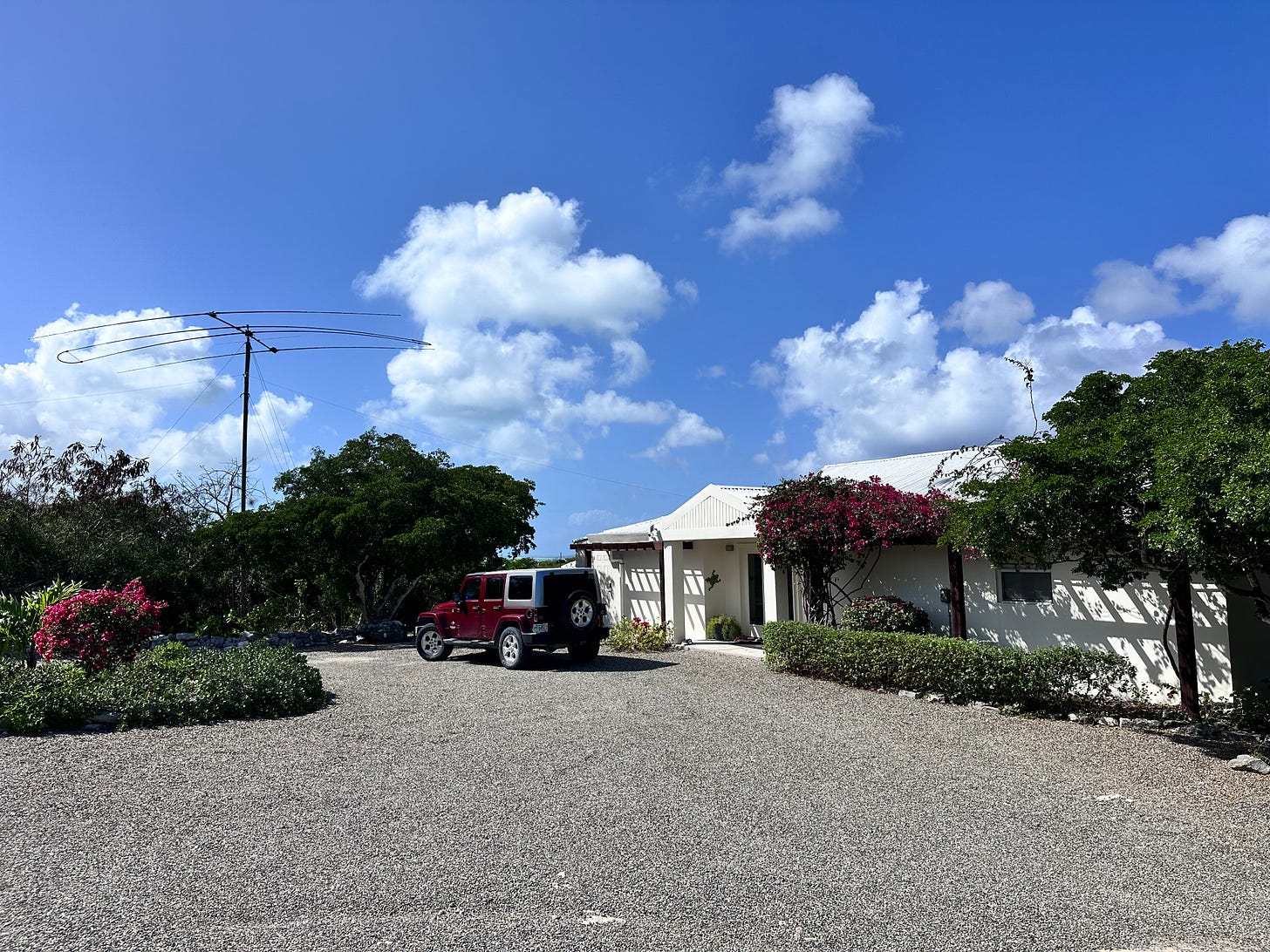
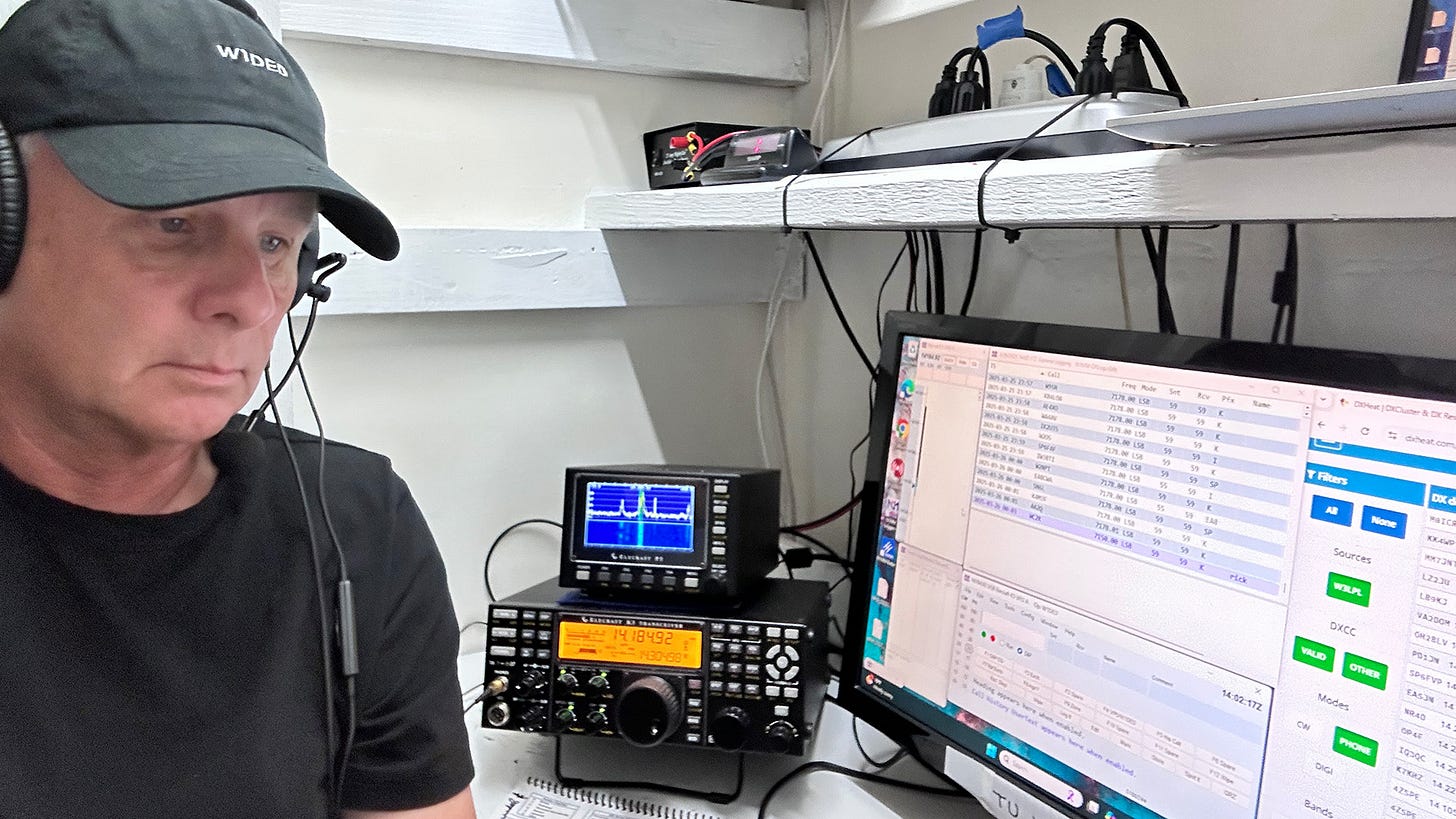
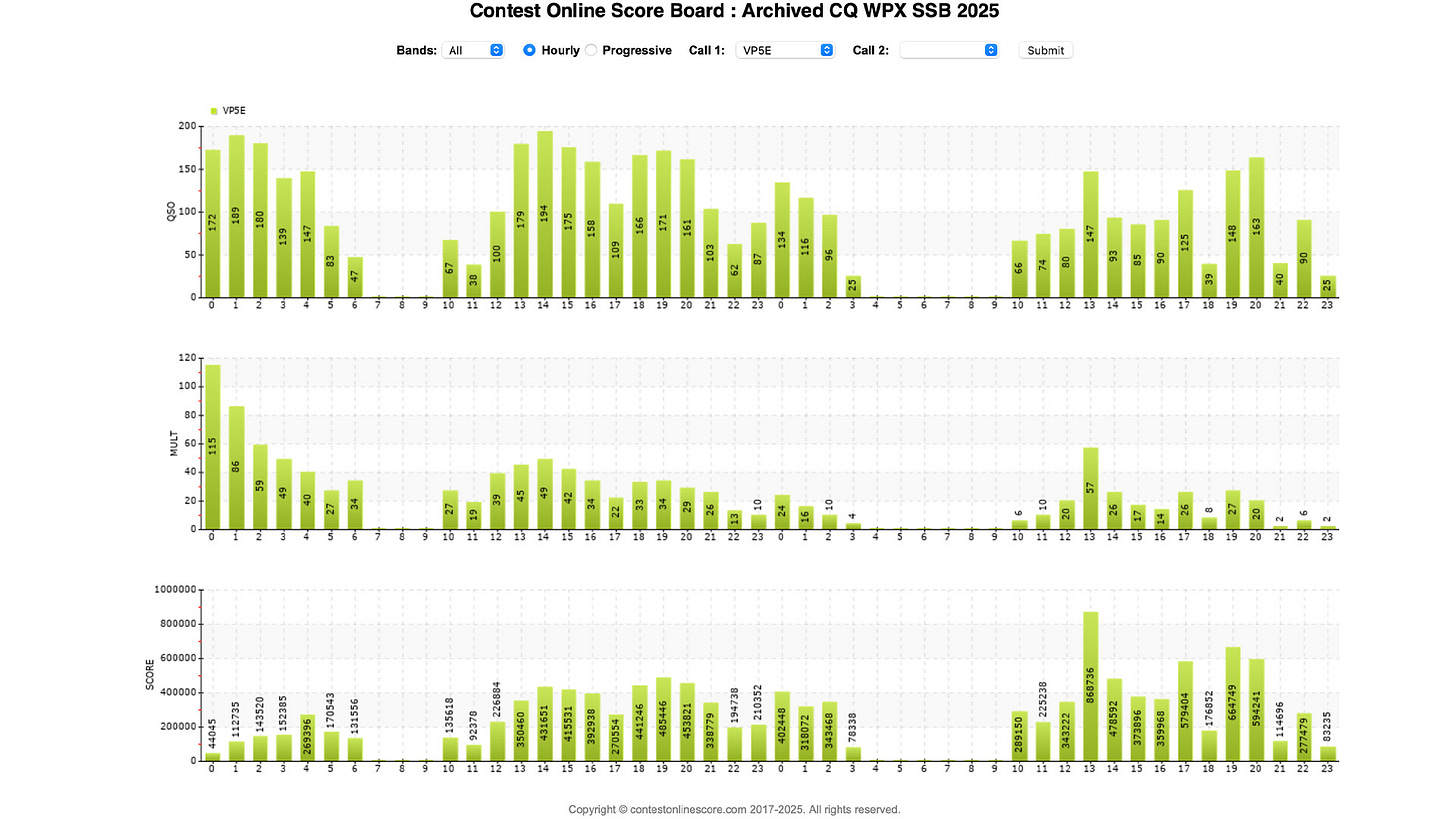
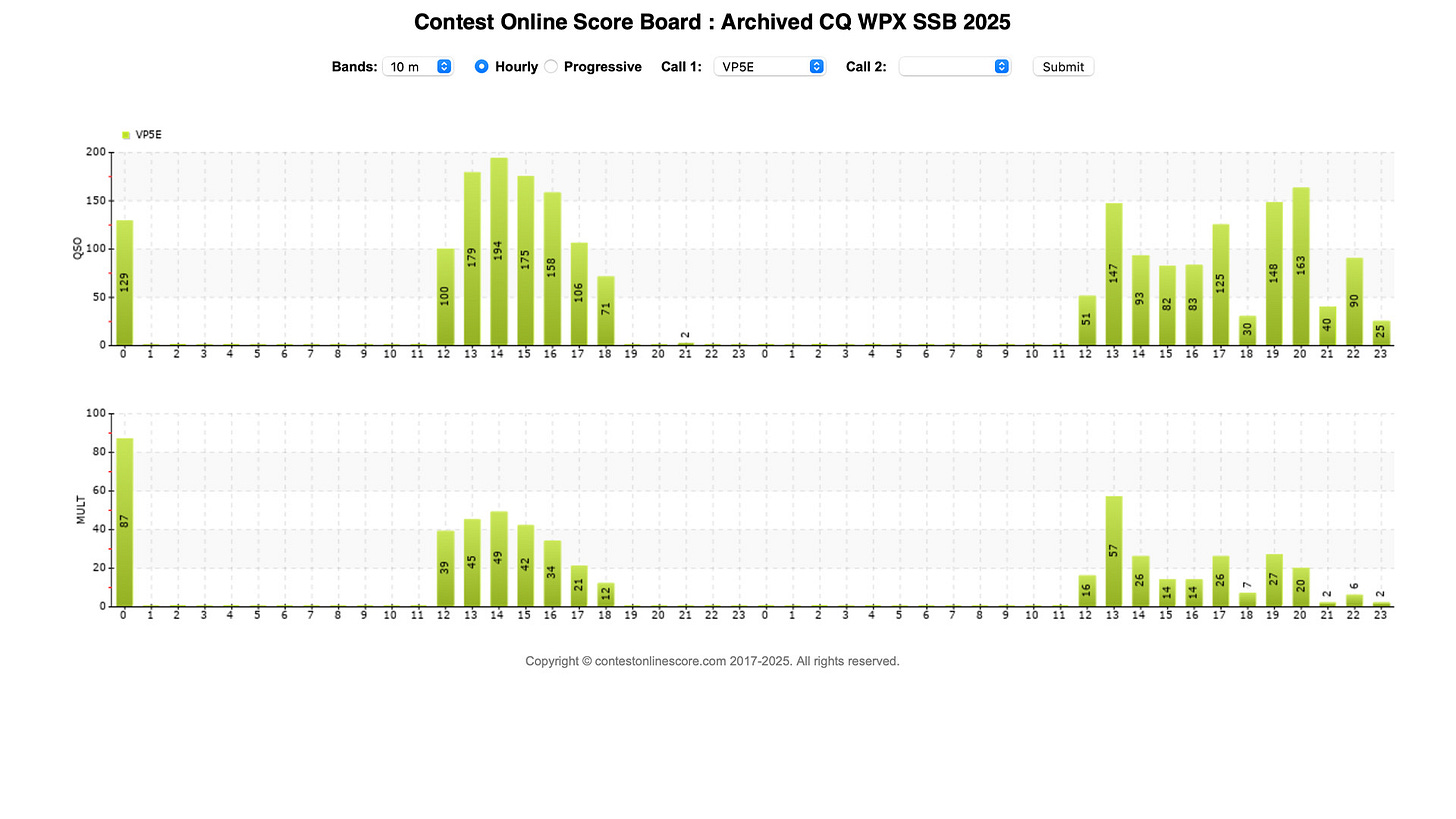
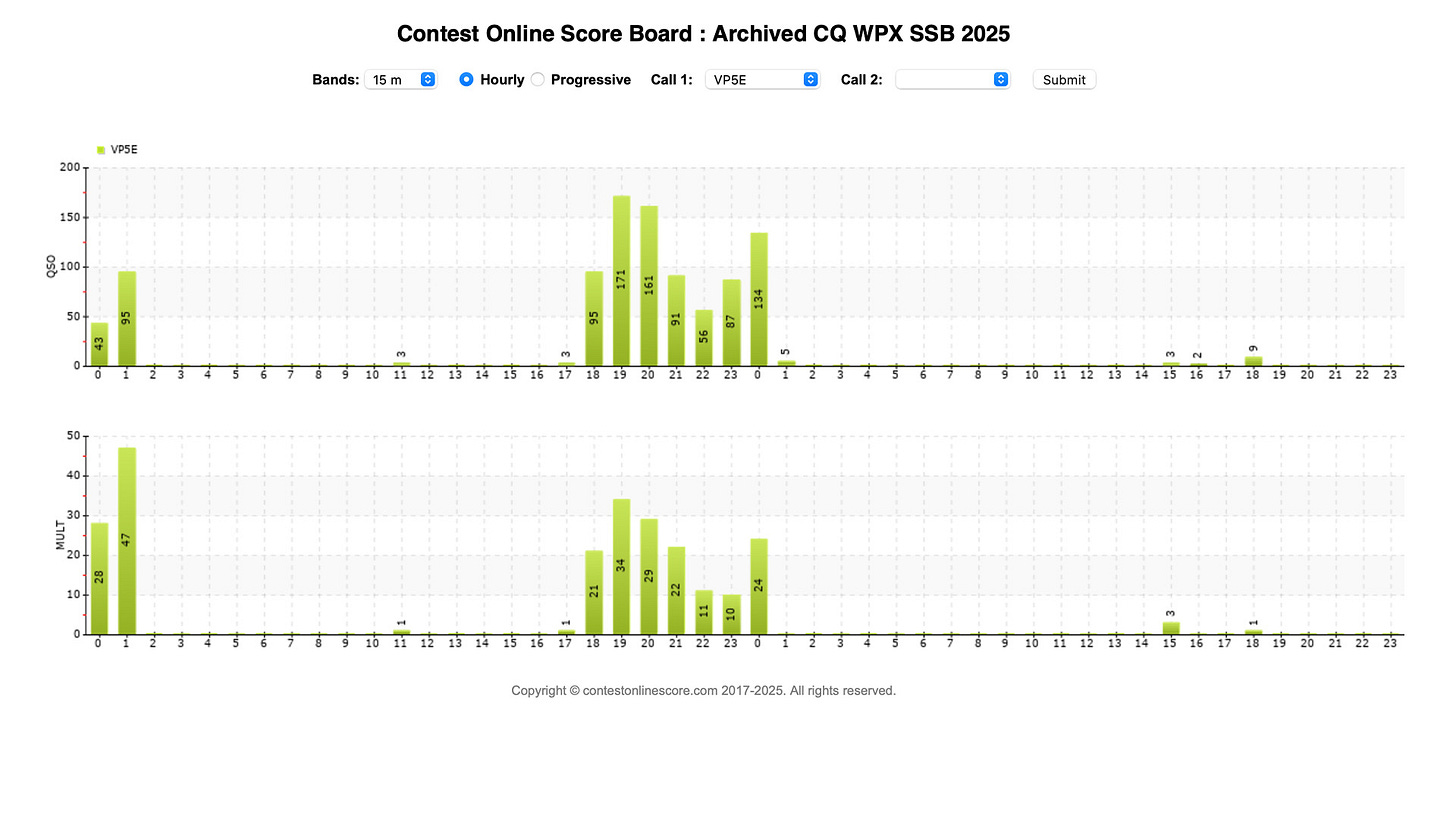
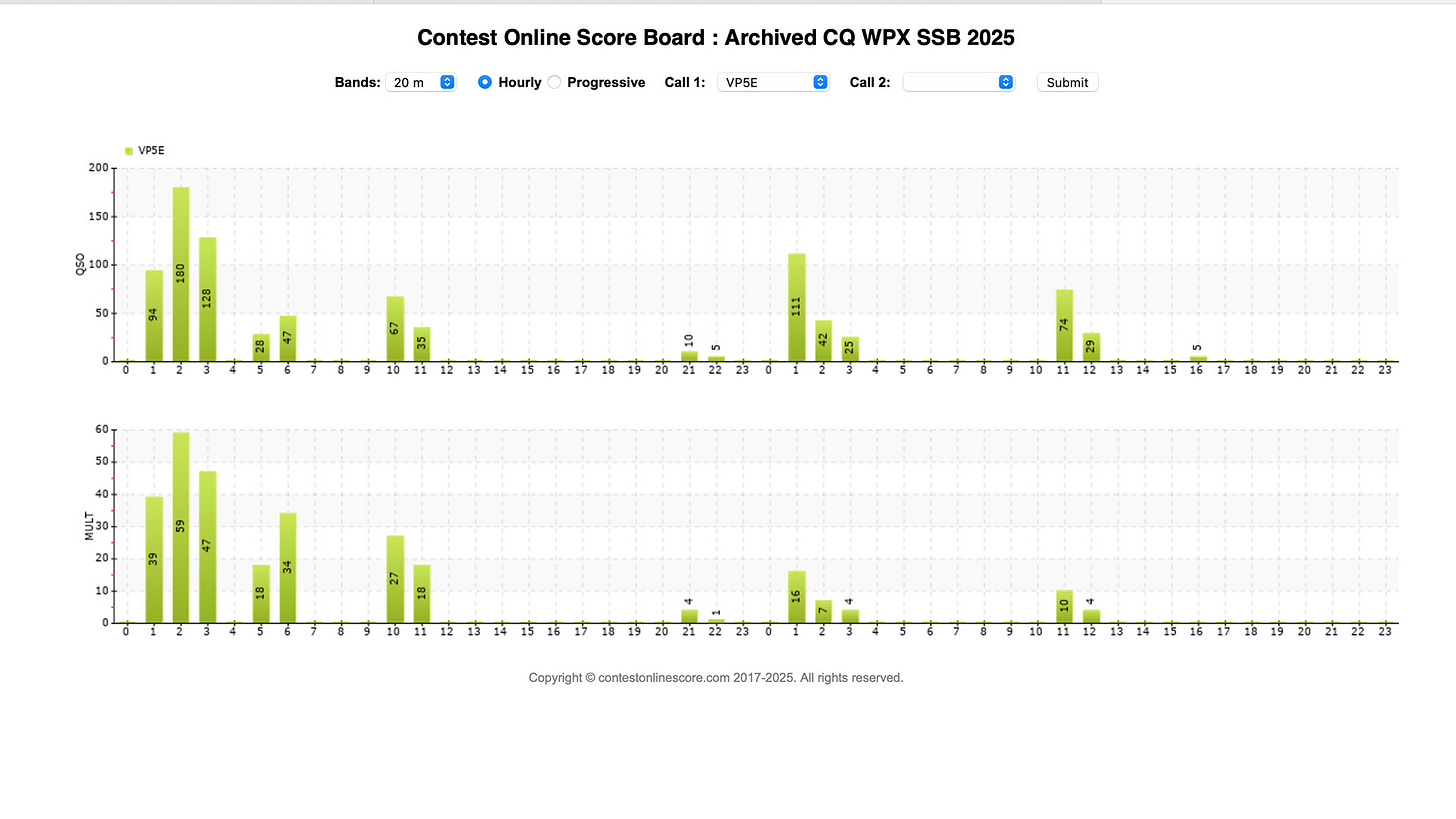
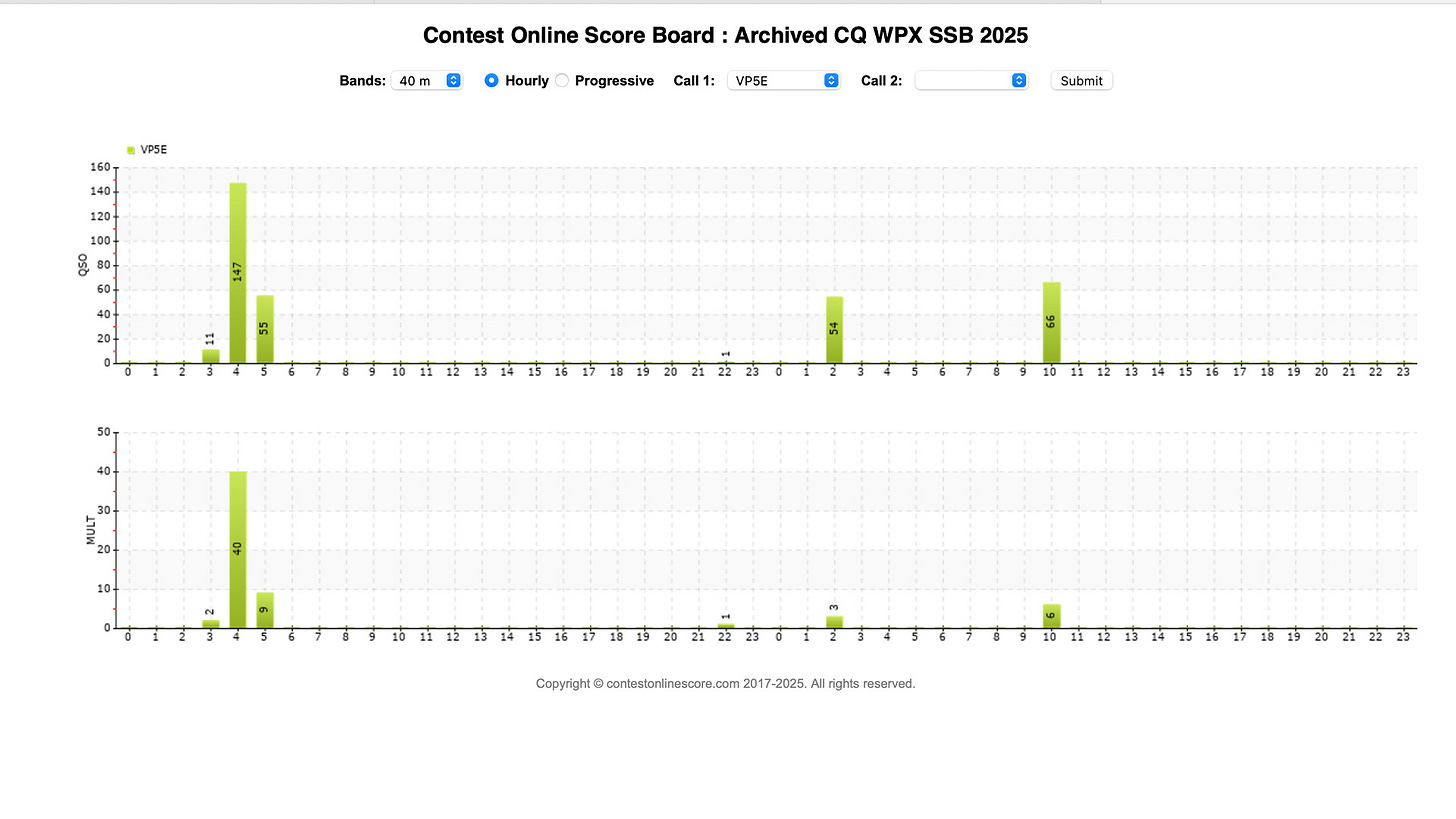
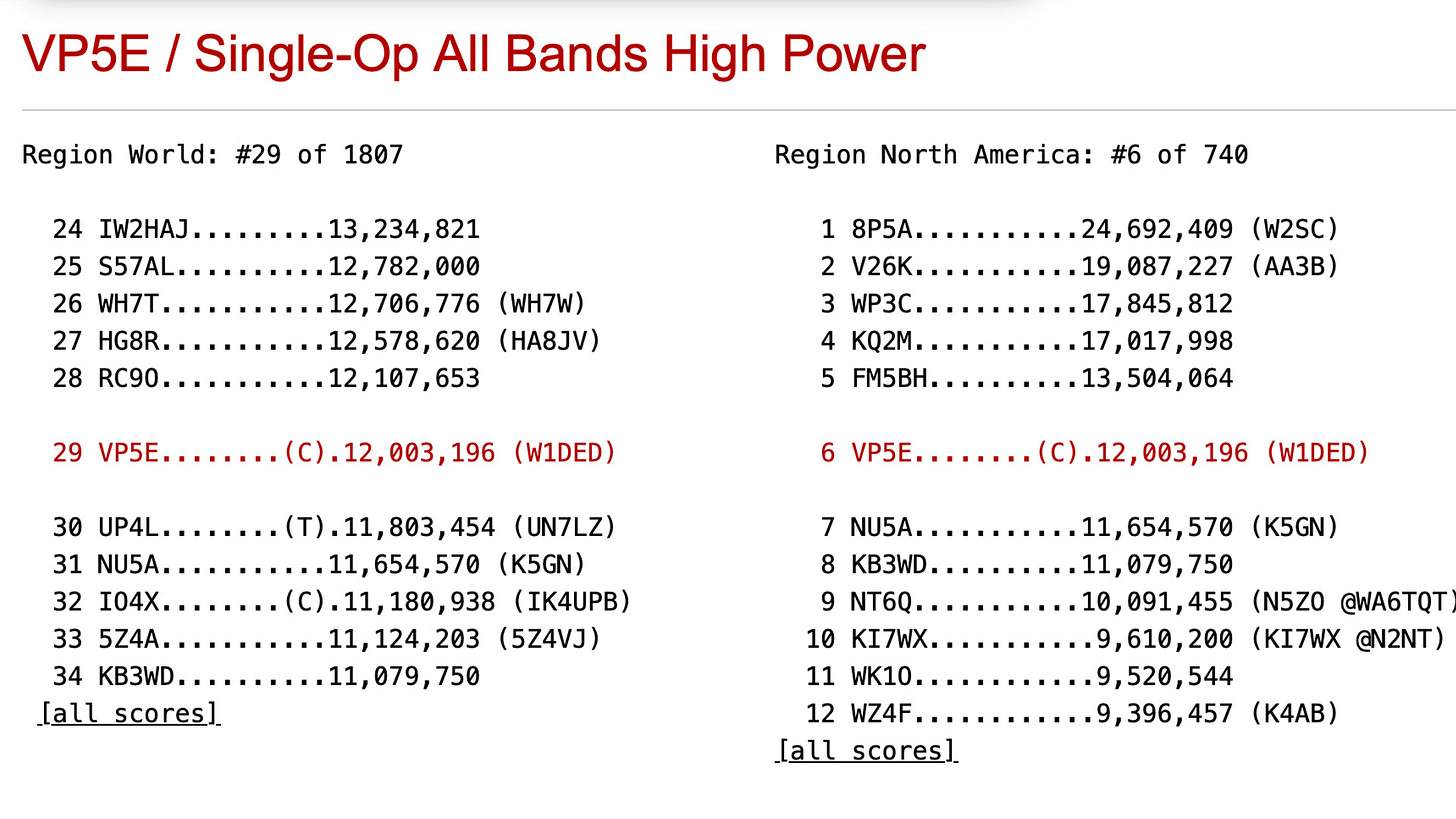
Nice effort!
73
XE2B